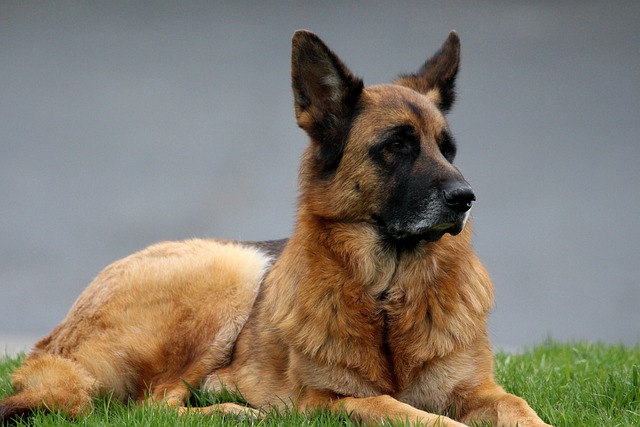
How do i train my dog to be obedient?
Watching your dog dart across the park ignoring your calls isn’t just frustrating—it can put them at risk near busy streets or public spaces.
German Shepherds thrive on connection, their intelligence making them eager to please when guided with patience. Nurturing friendliness starts early, when those floppy puppy ears and wiggly tails are still learning the world through curious sniffs. Exposing them to diverse people—children, seniors, folks with hats or canes—helps them recognize that new faces aren’t threats. Keep these meetings calm, offering treats when they approach gently. It builds a foundation where “stranger” becomes just another word for “potential playmate.”
Socialization isn’t just about people. Letting them interact with other dogs, from tiny terriers to large retrievers, teaches them appropriate boundaries. Always choose neutral ground for first meetings, avoiding spaces where another dog might feel territorial. Watch their body language: a relaxed tail and soft eyes mean they’re comfortable, while raised hackles call for a slow, calm separation. Many communities offer supervised puppy playgroups—check local regulations to ensure these gatherings comply with leash laws and public space rules.
Consistency in commands fosters trust. Using “sit” or “stay” when guests arrive gives your German Shepherd a clear role, redirecting excitement into obedience. Reward quick responses with their favorite toy or a piece of chicken; positive reinforcement sticks better than scolding. Over time, they’ll learn that good behavior brings good things, turning jumping into a polite nudge of the nose. Remember, harsh corrections can trigger defensiveness, undoing progress. Even strong-willed breeds respond better to a firm but kind tone.
Daily walks become opportunities to practice calm behavior. Passing a jogger? Stop, have them sit, and wait until the person passes before moving on. Encourage them to look at you instead of fixating, praising heavily when they do. This not only reinforces focus but also aligns with many areas’ requirements for dogs to remain under control in public. Carrying treats on walks turns every outing into a lesson, turning busy streets into classrooms where friendliness becomes second nature.
 Understanding their protective instincts helps channel them positively. German Shepherds often guard what they love, so teaching them that visitors mean good things helps ease suspicion. Invite friends over regularly, asking them to toss treats from a distance at first, gradually moving closer as your dog stays relaxed. It’s a slow process, but one that aligns with the idea that a well-socialized dog is a welcome member of the neighborhood—a concept embedded in many local animal welfare guidelines.
Understanding their protective instincts helps channel them positively. German Shepherds often guard what they love, so teaching them that visitors mean good things helps ease suspicion. Invite friends over regularly, asking them to toss treats from a distance at first, gradually moving closer as your dog stays relaxed. It’s a slow process, but one that aligns with the idea that a well-socialized dog is a welcome member of the neighborhood—a concept embedded in many local animal welfare guidelines.
Public spaces demand extra awareness. Keeping your German Shepherd leashed in designated areas respects both local ordinances and the comfort of others. Some parks have off-leash hours; using these times to let them run while calling them back periodically strengthens their recall—a skill that makes every outing safer. Always carry waste bags, a small act that upholds community standards and keeps shared spaces clean.
Mental stimulation plays a quiet role in friendliness. A bored German Shepherd may act out, directing energy toward barking or jumping. Puzzle toys, agility courses, or even a simple game of hide-and-seek with treats keep their minds engaged. Tired dogs are calm dogs, more likely to greet new people with a wag than a rush. This focus on their needs builds a bond that makes training feel like a partnership, not a chore.
Friendliness grows when fear has no place. If your German Shepherd shows anxiety around certain stimuli—a vacuum, loud trucks—desensitize them slowly. Play recordings of the sound at low volumes while they eat, gradually increasing the volume over weeks. It teaches them that scary noises don’t lead to harm. Never force them into uncomfortable situations; pushing too hard can create lasting mistrust. Patience here aligns with ethical training practices advocated by most animal welfare organizations.
Watching your German Shepherd greet a child with a soft nuzzle or sit politely as a neighbor pets them makes every training session worthwhile. These moments aren’t just about obedience—they’re about raising a dog who enriches your community. Friendliness, after all, is a reflection of the care you put in, turning a loyal protector into a beloved member of the neighborhood. With time, consistency, and a little joy in the process, that’s exactly what they’ll become.

Watching your dog dart across the park ignoring your calls isn’t just frustrating—it can put them at risk near busy streets or public spaces.

New puppy owners often find themselves rushing to clean up accidents before they set in, and that’s where puppy pad training becomes a game-changer.

If you've noticed your dog's waistline disappearing and your veterinarian has mentioned those few extra pounds, your first instinct might be to simply reduce the amount of food in their bowl.

Training a dog to use a designated spot indoors isn’t as daunting as many new owners fear, but it does take consistency and an understanding of your pet’s needs.

That moment of dread on a walk is all too familiar for many new dog owners. You see another dog approaching down the sidewalk of your neighborhood

If the sight of another dog on your neighborhood walk makes your heart sink as your own dog erupts into a frenzy of barking and lunging, you're not alone.